Under the federal Constitution, power is separated among three branches of government. Article I of the Constitution allocates the legislativeCreated by Article I of the Constitution at the federal level, this branch is responsible for drafting laws. power to Congress, which is composed of the House of Representatives and the Senate. Congress makes laws and represents the will of the people in doing so. Article II of the Constitution creates the executiveCreated under Article II of the Constitution, this is another name for the office of the president and its related agencies. power in the president and makes the president responsible for enforcing the laws passed by Congress. Article III of the Constitution establishes a separate and independent judiciaryCreated by Article III of the Constitution and by various state constitutions and laws, this is the branch of government dedicated to the administration of justice., which is in charge of applying and interpreting the meaning of the law. The U.S. Supreme Court sits at the top of the federal judiciary as the supreme court of the land. There are nine judges on the Supreme Court. (See Figure 2.1 "The U.S. Supreme Court in 2009".)
Figure 2.1 The U.S. Supreme Court in 2009
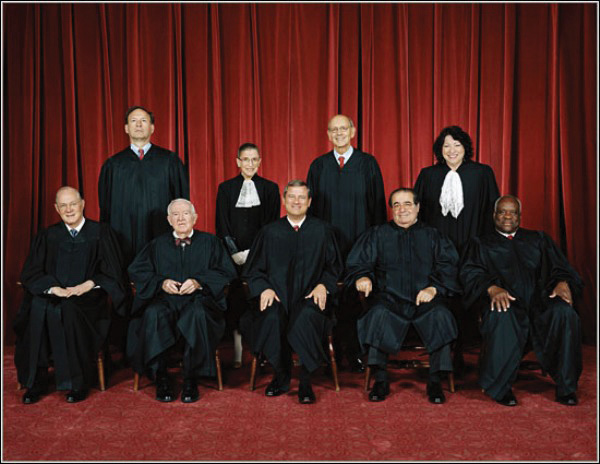
Justice Stevens has since retired and was replaced by Justice Kagan in 2010.
Source: Photo courtesy of Steve Petteway, Collection of the Supreme Court of the United States, http://en.wikipedia.org/wiki/File:Supreme_Court_US_2009.jpg.
The Constitution is remarkably short in describing the judicial branch. The president, under Article II, has the power to nominate judges with the advice and consent of the Senate. Article III also provides the following: “The judicial power of the United States, shall be vested in one Supreme Court, and in such inferior courts as the Congress may from time to time ordain and establish. The judges, both of the supreme and inferior courts, shall hold their offices during good behaviour, and shall, at stated times, receive for their services, a compensation, which shall not be diminished during their continuance in office.” Under the Constitution, therefore, there are only two requirements to becoming a federal judge: nomination by the president and confirmation by the Senate. There are no age, citizenship, or qualification requirements. If the president wanted to, he could nominate any reader of this book as a federal judge. Additionally, the Constitution guarantees that judges are relatively free from political interference by providing them with lifetime tenure and a salary that cannot be reduced.
It is commonly accepted that the three branches of government are coequal, but in reality they are very different. The judiciary is the only unelected branch of government and is therefore the most mysterious. Although many Americans know who the president is, and many are familiar with their representatives in Congress, very few know the names of the judges who sit on the Supreme Court or any lower court. When politicians run for Congress or president, they spend months campaigning, begging voters to look into their eyes and trust them enough to cast their votes. Since judges are not elected, the vast majority of Americans cannot associate them with a face. Indeed, many visitors to the Supreme Court building in Washington, DC, routinely come face-to-face with a justice and don’t realize it.
The three branches also consume vastly different resources in serving the public, with the entire federal court system consuming less than two-tenths of 1 percent of the federal budget. The political branches capture the public imagination with monuments and landmarks (Air Force One, the White House, the Capitol), while the federal judiciary works in relative anonymity. (All federal judges, for example, travel commercially and do not have access to government-owned planes.) Finally, the judiciary is designed to be the most remote branch from the people. In addition to being unelected, federal judges have life tenure and can be removed from office only through impeachment. They also tend to be in public office far longer than politicians. While the United States has had forty-four presidents and more than two thousand members of Congress, Chief Justice John Roberts is only the seventeenth chief justice. Roberts was only fifty years old when he became chief justice and will likely be chief justice for many decades to come, certainly long after his nominating president, George W. Bush, has faded from public life.
When we speak of the “federal judiciary,” we are referring to a very small entity compared to other federal bureaucracies. The Supreme Court (the building, justices, and staff) is one part of the federal judiciary. The district and appellate courts (described later in this chapter) are another part, and they also comprise judges and staff (although these courts do not own their own buildings; rather, all courts other than the Supreme Court are rented from other branches of the government). The Administrative OfficeThe agency responsible for rent, payroll, budget, and other administrative matters relating to the functioning of the federal judiciary. of the United States Courts runs the day-to-day issues for all the courts, such as payroll and rent. A second component of the judiciary is the Federal Judicial CenterA federal agency dedicated to conducting research on judicial administration and providing judicial education., an agency dedicated to conducting research on judicial administration and providing judicial education. A third component is the United States Sentencing Commission (USSC)The commission created by Congress to explore ways to establish uniformity in federal criminal sentencing., established by Congress to make recommendations on how to establish uniformity in federal criminal sentencing. In addition to his responsibilities in hearing cases and writing opinions, the chief justiceIn the U.S. Supreme Court, the representative of the judicial branch to other branches and the administrative head of the judiciary. oversees the overall operation of the federal courts and represents the courts to the other branches of government. When it comes to hearing and deciding cases, however, the chief justice is “first among equals”: he has no more power than any of the other justices, known as associate justicesIn the U.S. Supreme Court, one of the eight regular members of the Court..
In that capacity, the chief justice traditionally releases an annual report on the judiciary. Since becoming chief justice in 2005, Chief Justice Roberts (Figure 2.2 "Chief Justice John G. Roberts") has focused his annual reports on judicial pay. Although judicial salaries cannot be reduced, years have passed since Congress approved a cost-of-living increase for judges. District court judges are currently paid $169,300 (the same salary as members of Congress), while circuit court judges are paid $179,500. Supreme Court justices earn $208,100, and the chief justice earns $217,400. While this may seem like a lot of money, it’s important to keep in mind that the integrity of the judicial system depends on attracting the very best lawyers to join the bench. Lawyers of that caliber are also in high demand in private law firms, where they can earn many times more than what judges earn. As a result, high-quality lawyers who otherwise may serve the country by becoming judges never even consider joining the bench. As you can see from Note 2.11 "Hyperlink: Excerpt from 2008 Year-End Report to Congress", there is a risk, the chief justice believes, that the pool of judicial talent may be limited to less-than-the-best lawyers or those who are independently wealthy.
Figure 2.2 Chief Justice John G. Roberts
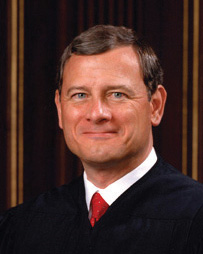
Source: Photo courtesy of the Supreme Court of the United States, http://en.wikipedia.org/wiki/File:File-Official_roberts_CJ_cropped.jpg.
http://www.supremecourt.gov/publicinfo/year-end/2008year-endreport.pdf
I suspect many are tired of hearing it, and I know I am tired of saying it, but I must make this plea again—Congress must provide judicial compensation that keeps pace with inflation. Judges knew what the pay was when they answered the call of public service. But they did not know that Congress would steadily erode that pay in real terms by repeatedly failing over the years to provide even cost-of-living increases.
Last year, Congress fell just short of enacting legislation, reported out of both House and Senate Committees on the Judiciary, that would have restored cost-of-living salary adjustments that judges have been denied in past years. One year later, Congress has still failed to complete action on that crucial remedial legislation, despite strong bipartisan support and an aggregate cost that is miniscule in relation to the national budget and the importance of the Judiciary’s role. To make a bad situation worse, Congress failed, once again, to provide federal judges an annual cost-of-living increase this year, even though it provided one to every other federal employee, including every Member of Congress. Congress’s inaction this year vividly illustrates why judges’ salaries have declined in real terms over the past twenty years.
Our Judiciary remains strong, even in the face of Congress’s inaction, because of the willingness of those in public service to make sacrifices for the greater good. The Judiciary is resilient and can weather the occasional neglect that is often the fate of those who quietly do their work. But the Judiciary’s needs cannot be postponed indefinitely without damaging its fabric. Given the Judiciary’s small cost, and its absolutely critical role in protecting the Constitution and rights we enjoy, I must renew the Judiciary’s modest petition: Simply provide cost-of-living increases that have been unfairly denied! We have done our part—it is long past time for Congress to do its.
The Supreme Court is a well-known institution today, but it wasn’t always that way. When the Court first met, many of the justices (then appointed by George Washington) couldn’t travel in time for the Court’s opening day, so the session was dismissed. For the first three years of its existence, the Court heard no cases of any importance. John Jay, the first chief justice, traveled to Europe while he was chief justice to negotiate the Jay Treaty with Great Britain. While there, he won election as governor of New York. He was reappointed as chief justice by President Washington and confirmed by the Senate but declined to return to the Court, citing the Court’s lack of energy, weight, and dignity as part of his reasoning. It wasn’t until John Marshall became the fourth chief justice (a position he held for a record thirty-four years) that the Supreme Court firmly established itself as a separate and coequal branch of government. The Supreme Court did not even get its own building until 1932, years after the nation’s capital was established in Washington, DC. Before then, it met in the basement of the old Senate building to hear cases. When William Taft (the only president who also served as a Supreme Court justice) became chief justice, he persuaded Congress to appropriate funds, and the Court finally got its own building in Washington, DC (see Figure 2.3 "U.S. Supreme Court").
http://supremecourt.c-span.org/VirtualTour.aspx
The Supreme Court building, located at 1 First Street, is an impressive marble building that sits at the northern border of Washington, DC’s, famous plaza. It is open year-round and is free to visit. If you have not been there, you can use the link to take a virtual tour of the entire building, inside and out, courtesy of C-Span.
The Supreme Court’s early malaise can partially be attributed to the problem that no one really had a good idea of what the Supreme Court was supposed to do. There were few cases of tremendous national importance in the new republic, and a quirky tradition known as “riding circuit” meant that the Supreme Court justices also acted as lower appellate court judges, thus making their work at the Supreme Court somewhat duplicitous. The Constitution simply states that the judicial power of the United States is vested in the Supreme Court, without expounding what that means. It wasn’t until 1803 that the modern role of the Supreme Court began to emerge.
In 1800, the presidential election between John Adams and Thomas Jefferson nearly tore the country apart. The election was bitter, partisan, and divisive. Jefferson won but wasn’t declared the winner until early in 1801. In the meantime, Adams and other Federalists in Congress attempted to leave their mark on government by creating a slate of new life-tenured judgeships and appointing Federalists to those positions. For the judgeships to become effective, certain paperwork (known as commissions) had to be delivered in person to the new judges. At the time power transitioned from Adams to Jefferson, several commissions had not been delivered, and Jefferson ordered his acting secretary of state to stop delivering them. When Jefferson came to power, there was not a single judge from his Democratic-Republican Party sitting on the bench, and he wasn’t keen on expanding the Federalist influence on the bench any further. One Federalist judge, William Marbury, sued the secretary of state, James Madison, to deliver his commission. The case was filed in the Supreme Court, led by Chief Justice John Marshall (Figure 2.4 "Chief Justice John Marshall"). Marshall himself was a Federalist and had served as Adams’s secretary of state, so he understood how political the case was and how he stood to be accused of bias if he ruled the wrong way. In a shrewd and calculated move, he ultimately ruled against Marbury but at the same time declared that it was the Supreme Court’s role to decide the meaning of the Constitution. This is called judicial reviewThe power of courts to declare legislative or executive acts unlawful., and it makes the U.S. Supreme Court the most powerful judicial body in the world. The following is from Marbury v. Madison: “It is emphatically the province and duty of the Judicial Department to say what the law is. Those who apply the rule to particular cases must, of necessity, expound and interpret that rule. If two laws conflict with each other, the Courts must decide on the operation of each.”Marbury v. Madison, 5 U.S. 137 (1803).
Figure 2.4 Chief Justice John Marshall
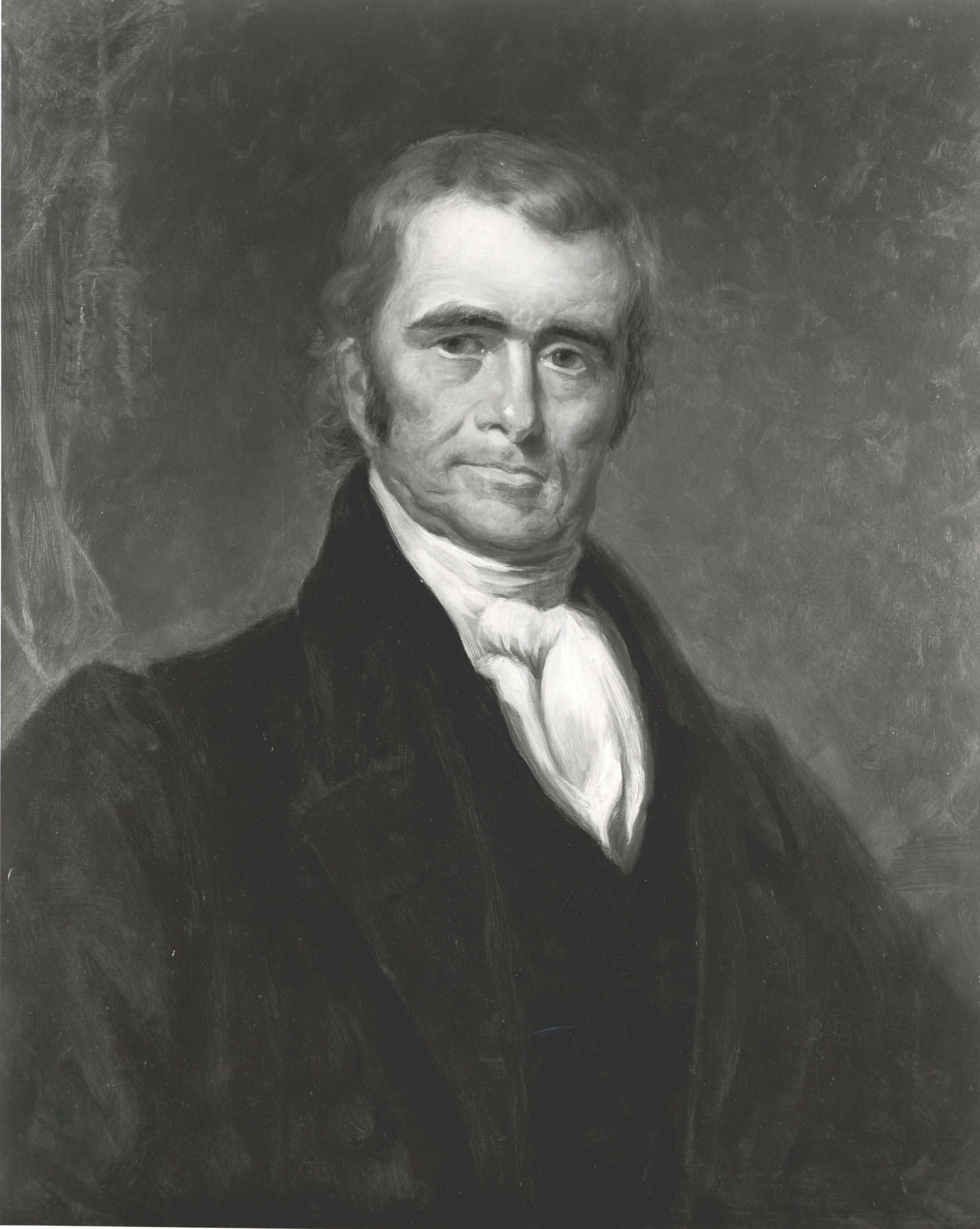
Source: Photo courtesy of the U.S. Department of State, http://www.flickr.com/photos/statephotos/2267272626.
Chief Justice Marshall did not invent judicial review; it is a feature of most common-law countries and as a concept goes back centuries. He did, however, institutionalize judicial review at the U.S. Supreme Court at a time when there was great uncertainty about the Court’s future role in government. While all three branches are bound to uphold the Constitution, on all matters relating to the meaning of the Constitution, the Supreme Court has the final say.
After Marbury v. Madison, it took the Supreme Court nearly sixty years to again use the power of judicial review to strike down legislation. The case was Dred Scott v. Sanford,Dred Scott v. Sanford, 60 U.S. 393 (1857). and it involved a slave who traveled with his owner, a doctor in the army, to many states including free states (Figure 2.5 "Dred Scott"). Dred Scott filed suit for his freedom, and the case ended up before the Supreme Court. In what many commentators call the Supreme Court’s “self-inflicted injury,” the Court, in an opinion written by Chief Justice Roger Taney, used judicial review to overturn the Missouri Compromise and held that Dred Scott was not a person under the Constitution and therefore could not file suit. The decision hastened the country into Civil War, and it took years for the Supreme Court to recover its standing with the public.
Figure 2.5 Dred Scott
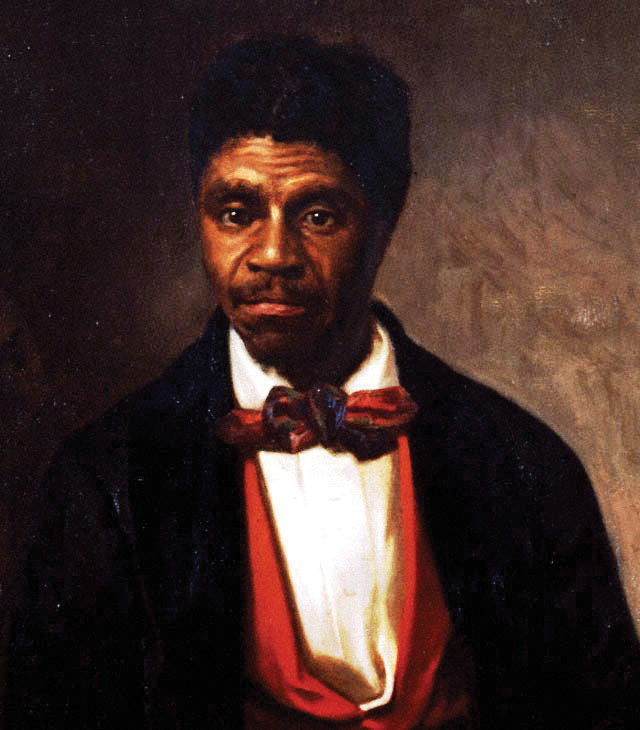
Source: Photo courtesy of the Missouri Historical Society, http://en.wikipedia.org/wiki/File:DredScott.jpg.
Judicial review means that any federal court can hold any act of the president or the Congress to be unconstitutional. It is a power that rests with each of the more than eight hundred federal judges, from the trial courts through the appellate courts. It is an extraordinary power in a democracy, as an unelected life-tenured person or group of persons overturns the acts of a popularly elected branch of government. Rather than give rise to judicial tyranny, however, our system of checks and balances ensures that the other two branches also play a critical role in “checking” the judiciary.
Take, for example, the executive branch. The president can control the judiciary by making careful judicial selections. The power of the president to name federal judges is absolute—he is not required to consult with any other individual in making his choice. As a matter of custom, presidents have traditionally looked to senators to provide names of judicial candidates for consideration, and some presidents are more willing than others to defer to the advice of aides and advisors. For much of the nation’s history, the Senate routinely confirmed the president’s choices. President Reagan’s nomination of Robert Bork in 1987 changed that tradition forever. Alarmed Democrats grilled Bork in confirmation hearings and ultimately declined to confirm him, setting the stage for a new breed of confirmation hearings where senators try to ascertain not just the nominee’s character but also how he or she will judge certain issues. Judicial nominees, especially to the Supreme Court, are under so much scrutiny now that sometimes even the president’s own party will turn against a nominee. This happened to President George W. Bush when he named his close friend Harriet Miers to fill a vacancy left by Justice Sandra Day O’Connor’s retirement. Alarmed at her lack of judicial experience and record on conservative judicial issues, Republicans urged the president to reconsider his choice, and Ms. Miers eventually withdrew as a nominee.
Presidents hope, and believe, that their selections reflect their own ideologies and beliefs. Federal judges are notoriously independent, however, and many demonstrate little hesitance to overrule their nominating president if they believe it necessary to do so. Several presidents have been disappointed in their nominee as they watched the judge move away from his or her earlier political roots. For example, President Eisenhower, a Republican, nominated Earl Warren as chief justice. Warren would later transform the civil rights landscape with a series of decisions, leading Eisenhower to describe nominating Warren as “the biggest damned fool mistake I ever made.”John Fox, “Biographies of the Robes: Earl Warren,” PBS, December 2006, http://www.pbs.org/wnet/supremecourt/democracy/robes_warren.html (accessed August 22, 2010). President Nixon, a Republican, placed Harry Blackmun on the Supreme Court, only to see Blackmun later move to the left and author Roe v. Wade,Roe v. Wade, 410 U.S. 113 (1973). the principal decision legalizing access to abortion services. More recently, President George H. W. Bush nominated David Souter to the Court on the belief that Souter would be a reliable conservative. Souter quickly aligned himself with the liberal wing of the Court.
In addition to nominating judges, the president serves as a check on the judiciary by being the primary means of enforcing judicial decisions. Federal judges do not control any police force and as such are unable to ensure their decisions are carried out. That responsibility falls on the executive branch. No matter how much a president may disagree with a judicial decision, it is a testament to our republican form of government, and the rule of law, that the president nonetheless faithfully executes a federal court’s decision.
http://www.npr.org/templates/story/story.php?storyId=14091050
Figure 2.6 Elizabeth Eckford
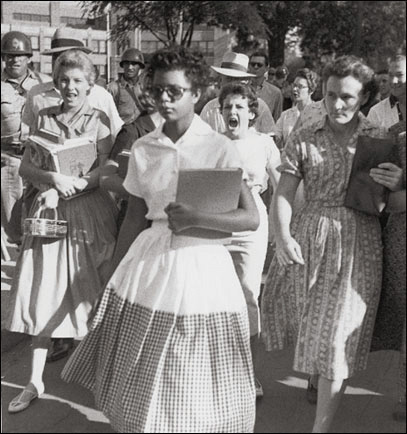
Source: Photo courtesy of Will Counts, http://en.wikipedia.org/wiki/File:Little_Rock_Desegregation_1957.jpg.
After the Supreme Court handed down its seminal decision in Brown v. Board of Education,Brown v. Board of Education, 347 U.S. 483 (1954). many Southern states continued to resist desegregation. In Little Rock, Arkansas, the local NAACP chapter enrolled nine students in Little Rock High School to begin with the fall term in September 1957. Several segregationist groups protested, and Arkansas governor Orval Faubus deployed Arkansas National Guard troops to stop the students from entering the school. President Eisenhower reluctantly ordered the 101st Airborne Division of the U.S. Army to Little Rock to ensure the students could enroll and attend class. Click the link to listen to a story about one of the students, Elizabeth Eckford (Figure 2.6 "Elizabeth Eckford"), who tried to enroll in Little Rock High School that day.
The Congress can also play an important role in “checking” the judiciary. The most obvious role is in confirming judicial selections. In the last few years, judicial confirmations have become a political battlefield, as activists on both the left and right seek to block judicial nominees they view as being too radical. It’s not unusual for some judicial candidates to wait years for their confirmation hearings. President George W. Bush, for example, initially appointed Chief Justice Roberts to a court of appeals judgeship in 2001, but he wasn’t confirmed until 2003, after Republicans regained control of Congress in midterm elections. Similarly, the newest member of the Supreme Court, Elena Kagan, was nominated for a federal appellate judgeship in 1999 by President Bill Clinton but was never confirmed due to Republican objections to her nomination.
In addition to confirmation, Congress also controls the judiciary through its annual budgetary process. Although the Constitution protects judicial salaries from any reductions, Congress is not obligated to grant any raises. For several years, judges have worked without cost-of-living raises. Although no one has seriously suggested that Congress is withholding money from the courts in retaliation for judicial decisions, some have observed that Congress would like to see the judicial branch yield on some high-profile issues such as televising Supreme Court proceedings in turn for pay raise consideration.
Finally, Congress can control the judiciary by determining how the courts are organized and what kind of cases the courts can hear. After the 1800 presidential election, for example, the newly elected Congress canceled the Supreme Court’s term for the entire year while they reorganized the judiciary. More recently, several conservative members of Congress have suggested splitting up the liberal-leaning Ninth Circuit Court of Appeals on the West Coast, to reduce its influence. The Constitution also gives Congress the authority to determine the courts’ jurisdiction. Congress has used this authority in the past to take away controversial cases from judicial consideration. During Civil War Reconstruction, for example, Congress passed a law taking away the Supreme Court’s jurisdiction to hear an appeal from a newspaper publisher jailed for publishing articles opposing Reconstruction.Ex parte McCardle, 74 U.S. 506 (1869). Recently, Congress did the same thing, removing federal court jurisdiction from hearing appeals involving detainees held at the military prison in Guantanamo Bay. In the recent past, members of Congress have also introduced legislation prohibiting federal courts from hearing cases about the public display of religion and flag burning or from using any foreign law as support for their decisions.
The third branch (judicial branch) is the only unelected branch of government. As such, it can sometimes appear remote or detached from the American public. The judiciary is composed of federal courts, the Administrative Office, the Federal Judicial Center, and the U.S. Sentencing Commission. The chief justice has administrative responsibilities over these agencies in addition to his adjudicatory duties. The judiciary comprises less than two-tenths of 1 percent of the federal budget. In spite of this, judicial pay is very low compared to pay in the private sector and is a source of tension between the judiciary and the other branches of government. Marbury v. Madison established the doctrine of judicial review, which allows courts to determine the final validity of laws as well as the meaning of the Constitution. Judicial review is an awesome power, and it is used sparingly. The president can check the judiciary through appointments and the enforcement of judicial decisions. The Congress can check the judiciary through funding, administrative control of court calendars and funds, and jurisdiction-stripping legislation.